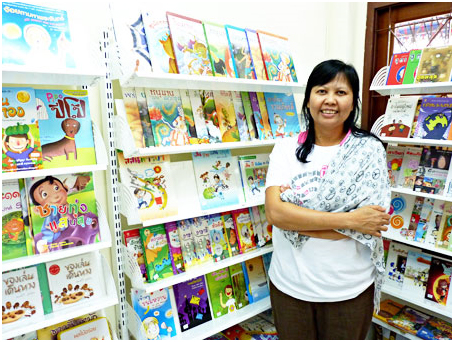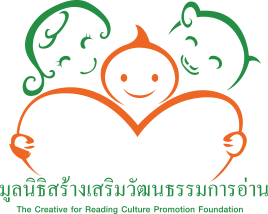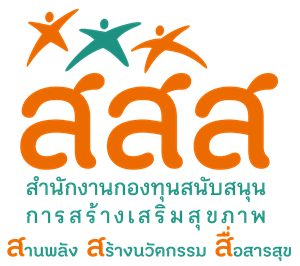Cartoonthai Institute: Positive Portrayals
Cartoonthai Institute: Positive Portrayals

UPDATE : 14 September 2010
Maneeya Dhammataree
For most children, cartoons are an important part of their young lives, providing a useful channel through which they can develop their imaginations.
By following the adventures of various characters, often set within surreal stories, the medium can provide them with a valuable form of escape from their responsibilities in the real world.
This sense of escape from the mundane ensures cartoons are the most popular medium through which children open themselves up to new ideas and experiences.
A Responsibility to Protect
According to an expert, cartoons differ significantly from other forms of commercial art in terms of their focus on young minds.
In such cases, “the heart of a cartoon should be to provide useful messages for the benefit of the reader, unlike other commercial art forms that serve to deliver the message of the creator [the owner of the message]”, says Sudjai Bhromkoed (see photo, above), manager of the Cartoonthai Institute, under the supervision of the Foundation for Children (FFC).
Widespread Disrespect
One of the most pressing challenges at present is the prevalence of cartoons featuring content deemed highly inappropriate for children.
Sudjai points out that while in the distant past, Thai cartoons would try to promote good virtues among young readers, this kind of presentation is now considered too complex for children today who face different circumstances and experiences. However, Sudjai concedes that while some imported foreign cartoons manage to communicate effectively with young readers, such publications might also contain offensive content, featuring sex or violence.
The Bangkok-based Cartoonthai Institute, which has been providing support to renowned professional Thai cartoonists and writers for almost 30 years, is involved in publishing and promoting Thai-language cartoon books that are aimed at encouraging children to carry out good deeds and develop a sense of social responsibility.
Raising Awareness
The institute is supporting the publication of cartoons that teach children about good values and virtues. One such publication – Peuch Pan Tee Medta (‘The Helpful Plants’) – teaches young readers about the ecosystem and how different living beings on Earth are dependent on each other. The popular tabloid-style Thai family publication Rak Look honored the book with a Rak Look Award in the 10-12 age category in 2007.
A story about Med Guay Jee School provides messages about differences and unity. The story focuses on a school where several different kinds of animal study. While the animals have different beliefs and ways of life, they have to learn to live happily together in unity. A Med Guay Jee is actually a watermelon seed and the story that unfolds is almost like a microcosm of Thai society, which allows for the largely peaceful coexistence of peoples of various political and religious beliefs.
‘Letting Go’
While the adult world delivers messages through cartoons, children can also use cartoons to help them express their otherwise unspoken feelings, according to Sudjai.
The Cartoonthai Institute has organized cartoon workshops that don’t solely help young participants to develop their artistic technique, but also helps them to create positive and encouraging stories for the betterment of society.
Several well-known professional cartoonists and writers, including Amaraporn Pandinthong, who wrote the screenplay for the animated movie Kan Kluay, and Chai Ratchawat, an editorial cartoonist, have provided a helping hand by guiding students through the techniques required to produce an effective cartoon.
Appropriate Activities
Each group of participants attempts to produce material that is appropriate for consumption by members of their own age group, so the very youngest children (aged 0-2) attempt to produce drawings that reflect the actual shape of their subjects, while children aged 2-4 can start to be a little more imaginative.
“We’re just so grateful that people in the business have volunteered to help us out. They want the Thai cartoon industry to have a better future,” according to Sudjai.
Since its establishment in the early 1980s, more and more parents have come to trust the institute’s cartoon books, many of which have received awards at a national level.
Sudjai recounts how a mother once suggested that the characters featured in Med Guay Jee School were “too weird”, since they feature human bodies with animal heads.
While she initially took offense and didn’t want her son to read it, after reading the book herself, she then fully understood the importance of the message, so decided to change her mind. Since that incident, the mother has been completely supportive of the use of comic books featuring creative content, Sudjai says.
“This is how the institute fights against the offensive cartoons that are very easy to find on the market nowadays,” Sudjai says, adding that, “we have no power to ban it, but will do everything we can to ensure creative cartoons replace them on the shelves”.
คุณสุดใจ พรหมเกิด ผู้จัดการสถาบันการ์ตูนไทย มูลนิธิเด็ก และผู้จัดการแผนงานสร้างเสริมวัฒนธรรมการอ่าน ได้กล่าวถึงเรื่องการสร้างสรรค์สังคมไทยด้วยหนังสือการ์ตูนไว้อย่างน่าสนใจ จากบทสัมภาษย์ข้างต้นนี้
แหล่งที่มาของข่าวและภาพ : http://www.tannetwork.tv/tan/ViewData.aspx?DataID=1034759

